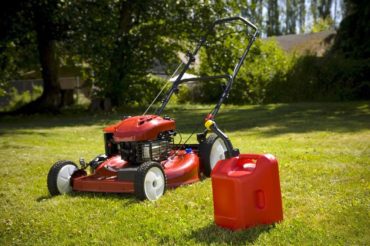 It may still be drizzling outside but there’s no doubt the lawn needs attention. If you’re getting ready to get out your lawn mower, trimmer, leaf blower, chain saw, pruner or other piece of outdoor power equipment, here are some tips from the Outdoor Power Equipment Institute on making sure you’re staying safe while doing your yard work:
It may still be drizzling outside but there’s no doubt the lawn needs attention. If you’re getting ready to get out your lawn mower, trimmer, leaf blower, chain saw, pruner or other piece of outdoor power equipment, here are some tips from the Outdoor Power Equipment Institute on making sure you’re staying safe while doing your yard work:
Get out your owner’s manual. Follow all guidelines for your outdoor power equipment and familiarize yourself with the controls. If you have lost your manual, look it up online.
Inspect your equipment. Check for loose belts and missing or damaged parts. Replace any parts needed or take your equipment to a qualified service representative.
Drain old fuel. Don’t leave fuel sitting in the tank for more than 30 days. Untreated gasoline (without a fuel stabilizer) left in the system will deteriorate, which may cause starting or running problems and, in some cases, damage to the fuel system. *
Only use E10 or less fuel. Some gas stations may offer 15 percent ethanol (E15) gas or higher ethanol fuel blends, but any fuel containing more than 10 percent ethanol can damage — and is illegal to use in — small engine equipment not designed for it.
Label your fuel can with the date of purchase and ethanol content of the fuel. Never put “old” gas in your outdoor power equipment. If you don’t know the date of purchase, dispose safely of the fuel in the can and buy fresh fuel.
Clean your equipment. Remove any dirt, oil or grass stuck to it. A clean machine will run more efficiently and last longer.
Sharpen your cutting blade. Have lawn mower cutting blades sharpened so you can get a clean cut on your lawn and not tear the grass. Sharper blades mean lawns will be healthier and lawn mowers will operate more efficiently. Nicked or broken blades, which can come from hitting rocks or other debris, should be replaced.
The Outdoor Power Equipment Institute (OPEI) is an international trade association and an advocacy voice representing more than 100 power equipment, engine and utility vehicle manufacturers and suppliers. For more safety tips, go to www.opei.org. For information on proper fueling, go to www.LookBeforeYouPump.com.
* Note: Fuel is a hazardous liquid and should be disposed of properly at a haz-mat facility. Never drain your old fuel into the gutter, drain, soil, or any other area not designated for it.









